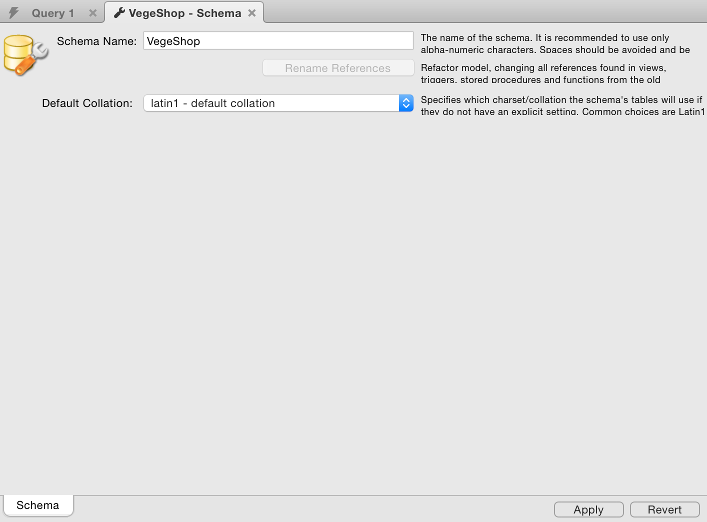


The following font formats are supported: It’s helpful to place the fonts preferred by your users here because it allows the font to be used in RStudio regardless of what fonts they have installed locally. If you wish to make additional fixed-width fonts available to your users, you can place them here: /etc/rstudio/fontsįonts placed here will be automatically made available for selection in RStudio’s Appearances settings (Tools -> Global Options -> Appearance) for all users. By default, only fonts that end users have installed locally can be selected.
BOLD DATABASE WORKBENCH TUTORIAL CODE
RStudio’s code editor and R console use a fixed-width font. Run the R command ?rstudioapi::addTheme for more help. You can create one by importing an existing TextMate theme file, or by starting from scratch (using an existing theme file as a template). rstheme file contains plain-text CSS with some special metadata. rstheme files in the following directory: /etc/rstudio/themes You can define additional custom themes for RStudio by placing. The default Shiny R Markdown file content (without YAML header) The default R Markdown presentation file content (without YAML header)

The default R Notebook file content (without YAML header) The default R Markdown document file content (without YAML header) In /etc/rstudio/templates, you can customize the following: File There are also some special template files which ship with RStudio these, too, are customizable. # /etc/rstudio/templates/default.R # - # Script: # Author: # Purpose: # Notes: # Copyright(c) Corporation Name #. For example, to start all R scripts with a standard comment header users can fill out, you could use the following:

You can, however, define the contents of the blank document by creating a file named default.X in /etc/rstudio/templates, where X is the file extension you wish to customize. RStudio typically opens new documents with completely blank contents. If users define their own snippets (for a given file type), changes to the system snippet file (for that same file type) won’t have any effect on those users.If you define your own snippets (for a given file type), they will replace those that ship with RStudio (for that same file type).Note that RStudio will not merge snippet files, which implies the following: You can find documentation on the snippet file format in the Cloud 9 IDE snippet documentation. You can also define snippets for CSS files in the file css.snippets, and so on. # /etc/rstudio/snippets/r.snippets snippet lib library($) The schema for the JSON file can be found at: User preferences set in the RStudio IDE’s Global Options dialog can also be set in the JSON file rstudio-prefs.json, located in the settings directory described above. The examples in this section presume you’re setting system-wide settings in /etc/rstudio in each case it’s also possible to use a different folder by changing environment variables as described above, or to apply the settings to individual user accounts by changing files in ~/.config/rstudio. For example, to store system-wide preferences in /var/config/settings/rstudio-prefs.json, you would set the RSTUDIO_CONFIG_DIR variable to the value /var/config/settings. These variables specify a specific directory (not a base directory). If specified, the RStudio variables take precedence over the XDG variables. For example, to store system-wide preference configuration in /var/config/rstudio/rstudio-prefs.json, you would set the XDG_CONFIG_DIRS variable to the value /var/config. In accordance with the Base Directory Specification, the environment variables specify the location of the rstudio folder. They are configurable using environment variables: Scope All of the session settings file locations described in this section conform to the XDG Base Directory Specification.


 0 kommentar(er)
0 kommentar(er)
